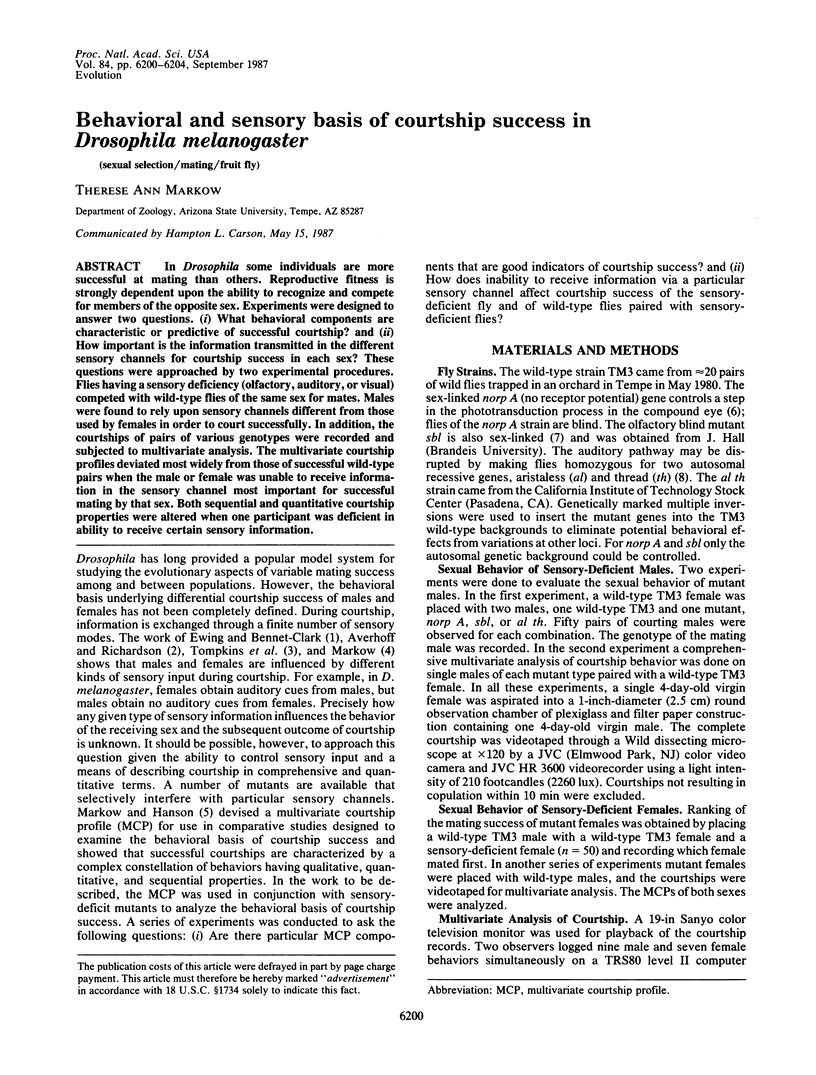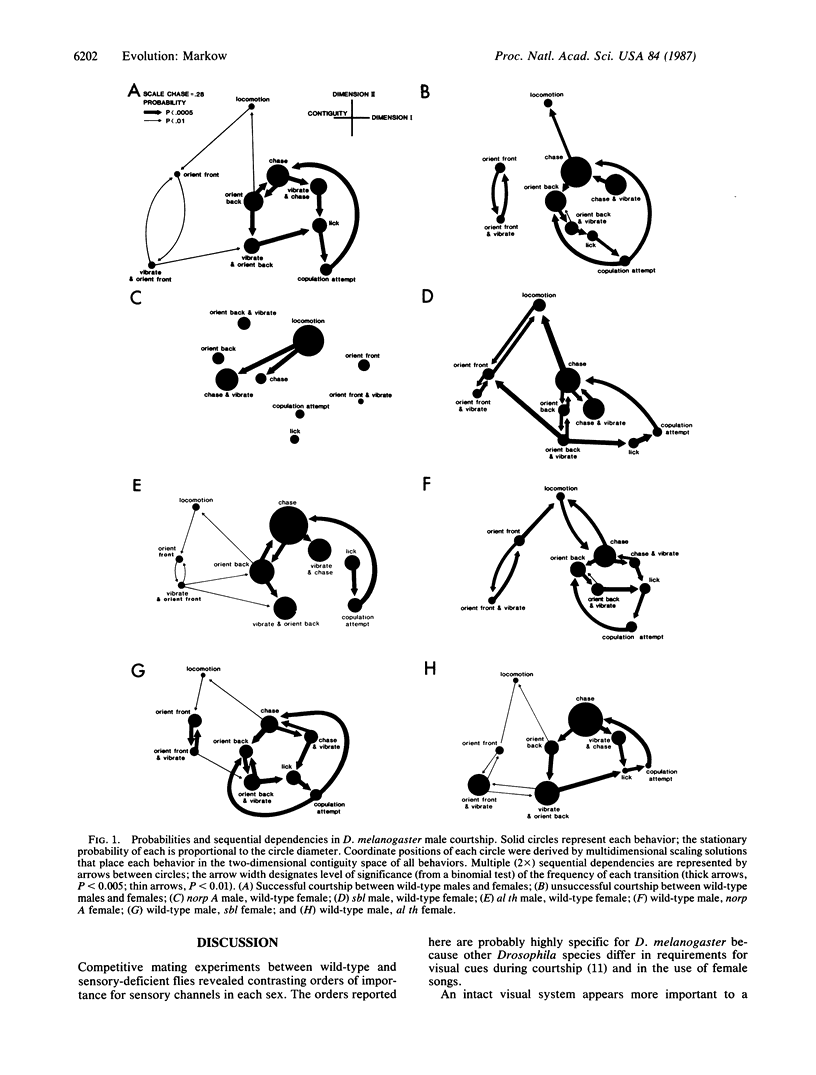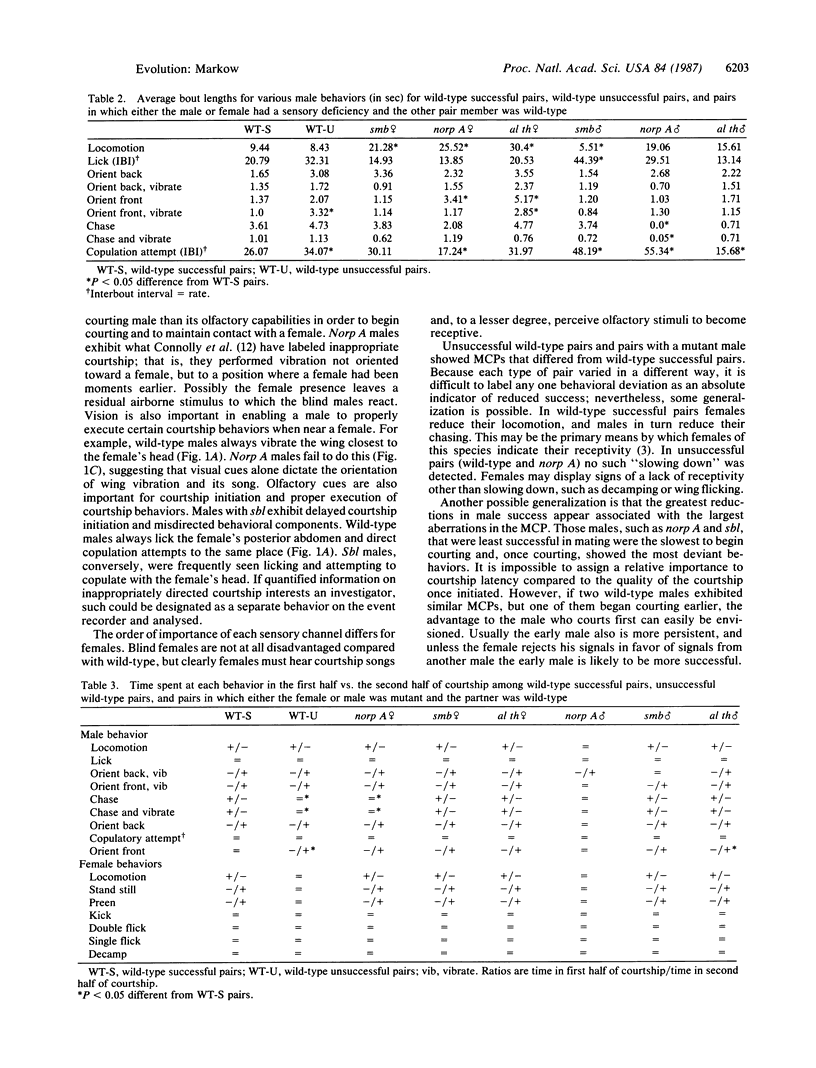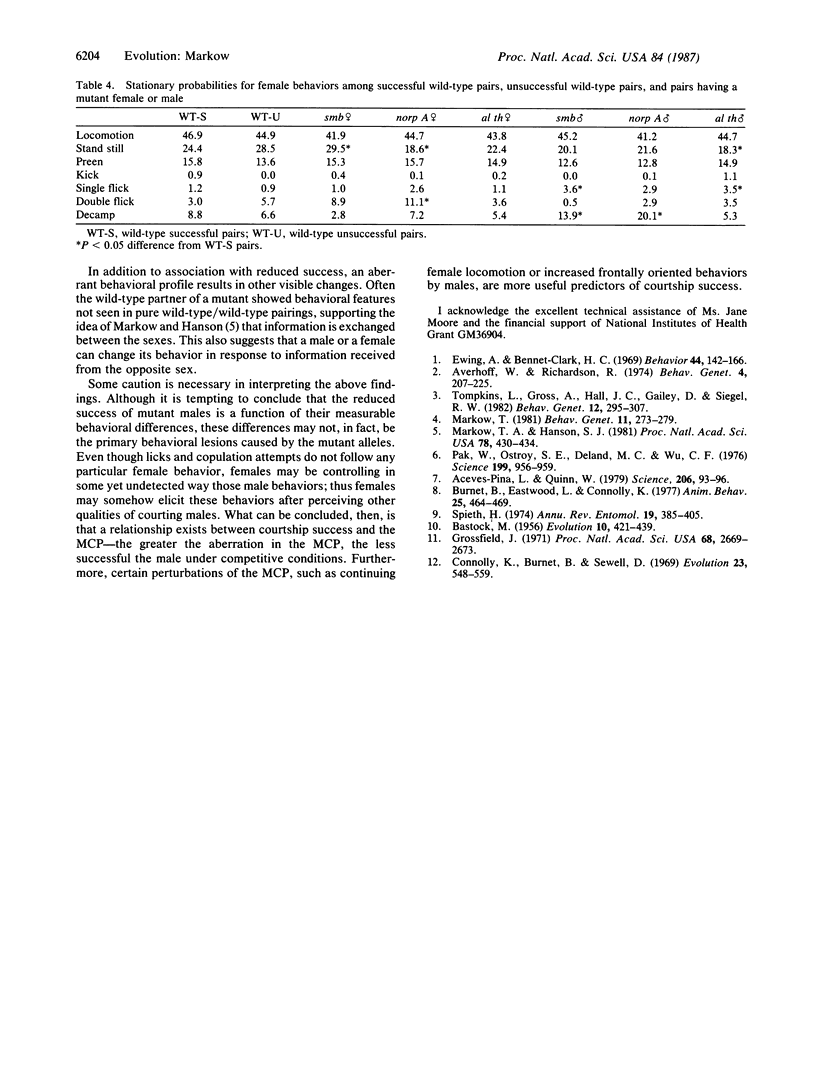Abstract
In Drosophila some individuals are more successful at mating than others. Reproductive fitness is strongly dependent upon the ability to recognize and compete for members of the opposite sex. Experiments were designed to answer two questions. (i) What behavioral components are characteristic or predictive of successful courtship? and (ii) How important is the information transmitted in the different sensory channels for courtship success in each sex? These questions were approached by two experimental procedures. Flies having a sensory deficiency (olfactory, auditory, or visual) competed with wild-type flies of the same sex for mates. Males were found to rely upon sensory channels different from those used by females in order to court successfully. In addition, the courtships of pairs of various genotypes were recorded and subjected to multivariate analysis. The multivariate courtship profiles deviated most widely from those of successful wild-type pairs when the male or female was unable to receive information in the sensory channel most important for successful mating by that sex. Both sequential and quantitative courtship properties were altered when one participant was deficient in ability to receive certain sensory information.
Full text
PDF




Selected References
These references are in PubMed. This may not be the complete list of references from this article.
- Aceves-Piña E. O., Quinn W. G. Learning in normal and mutant Drosophila larvae. Science. 1979 Oct 5;206(4414):93–96. doi: 10.1126/science.206.4414.93. [DOI] [PubMed] [Google Scholar]
- Averhoff W. W., Richardson R. H. Pheromonal control of mating patterns in Drosophila melanogaster. Behav Genet. 1974 Sep;4(3):207–225. doi: 10.1007/BF01074155. [DOI] [PubMed] [Google Scholar]
- Grossfield J. Geographic distribution and light-dependent behavior in Drosophila. Proc Natl Acad Sci U S A. 1971 Nov;68(11):2669–2673. doi: 10.1073/pnas.68.11.2669. [DOI] [PMC free article] [PubMed] [Google Scholar]
- Markow T. A. Genetic and sensory aspects of mating success of phototactic strains of Drosophila melanogaster. Behav Genet. 1981 May;11(3):273–279. doi: 10.1007/BF01065464. [DOI] [PubMed] [Google Scholar]
- Markow T. A., Hanson S. J. Multivariate analysis of Drosophila courtship. Proc Natl Acad Sci U S A. 1981 Jan;78(1):430–434. doi: 10.1073/pnas.78.1.430. [DOI] [PMC free article] [PubMed] [Google Scholar]
- Paj W. K., Istrit S. E., Deland M. C., Wu C. F. Photoreceptor mutant of Drosophia: is protein involved in intermediate steps of phototransduction? Science. 1976 Nov 26;194(4268):956–959. doi: 10.1126/science.824732. [DOI] [PubMed] [Google Scholar]
- Spieth H. T. Courtship behavior in Drosophila. Annu Rev Entomol. 1974;19:385–405. doi: 10.1146/annurev.en.19.010174.002125. [DOI] [PubMed] [Google Scholar]
- Tompkins L., Gross A. C., Hall J. C., Gailey D. A., Siegel R. W. The role of female movement in the sexual behavior of Drosophila melanogaster. Behav Genet. 1982 May;12(3):295–307. doi: 10.1007/BF01067849. [DOI] [PubMed] [Google Scholar]


